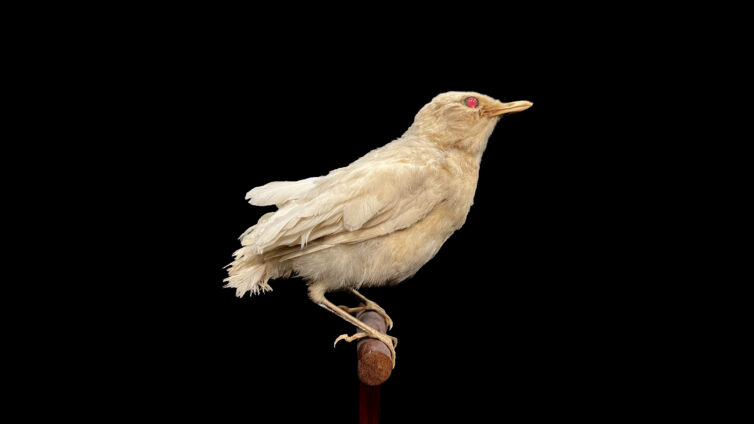
“For some reason, albinism and partial albinism have been recorded in robins more than any other wild bird species. One study found that 8.22% of all albino wild birds found in North America were robins. But only about one robin in 30,000 is an albino or partial albino. Most records of robins with albinism are only partial albinos, which of course, live longer than total albinos” (Journey North American Robin, n.d.).
A few theories attempt to explain the frequency of albinism — “an organism exhibiting deficient pigmentation” (Merriam-Webster Dictionary, n.d.) in robins. The first is their habitat, which tends to be human backyards and other more urbanized locations. Blending into these habitats is not a priority, so albinism doesn’t present the same dangers as it would to other species. The second is their mating rituals, which center on song and behavior rather than plumage. So again, the white feathers are not impacting a male robin’s ability to find a mate and reproduce.
However, these albino robins do face unique challenges. Pigment strengthens the feathers, so the lack of pigmentation results in weaker feathers, and thus their ability to fly can be impacted. Pigment in the eyes is also protective from the sun; many albino robins go blind because their eyes are unprotected from the sun’s glare.
Reflection question:
Robins are some of the most commonly sighted birds in North America. Have you even seen an albino robin?
Reference:
Journey North American Robin. (n.d.). https://journeynorth.org/tm/robin/AlbinoRobins.html
